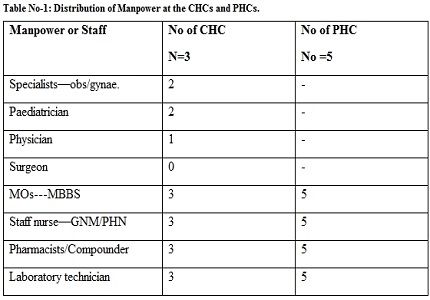Ziabetus Shakari (Type 2 Diabetes Mellitus) in Elderly and its Dietary Management
Abstract
Prevalence of type 2 diabetes mellitus is increasing rapidly around the world. The ageing of the overall population is a significant driver of the diabetes epidemic. Diabetes in older adults is linked to higher mortality, reduced functional status, and increased risk of institutionalization.
Nutrition is an integral part of diabetes care for all ages, but there are additional considerations for older adults with diabetes. The Unani system of medicine believes that a physician is not the healer but an assistant to nature Tabiyat (physique) of the body, which is the true healer hence the diet should be in accordance with it. Diets have been mentioned according to various stages of life to maintain the digestive system at its best.
Downloads
References
2. Ramachandran A, Das AK, Joshi SR, Yajnik CS, Shah S, Kumar KMP. Current Status of Diabetes in India and Need for Novel Therapeutic Agents. JAPI suppelement. 2010, 58: 7-9.
3. Shivashankar M, Mani D. A Brief Overview of Diabetes. International Journal of Pharmacy and Pharmaceutical Sciences 2011;3(4):22-27.
4. Vijayakumar G, Arun R, Kutty VR. High Prevalence of Type 2 Diabetes Mellitus and Other Metabolic Disorders in Rural Central Kerala. JAPI 2009;57:563-567.
5. Ozougwu JC, Obimba KC, Belonwu CD, Unakalamba CB. The pathogenesis and pathophysiology of type 1 and type 2 diabetes mellitus. Journal of Physiology and Pathophysiology 2013;4(4):46-57.
6. Rath SP, Das B, Mishra SK. Demographic Dynamics of India’s Population – Reference Study of Census-2011 with Backdrops & Future Trends. International Journal of Business and Management Tomorrow 2011:1(3):3,5,9.
7. Majoosi Ali ibn Abbas. Kamilus Sana’ah (Urdu translation by Kantoori Ghulam Hasnian). 1st ed. New Delhi: Idara Kitabush Shifa; 2010:154,467,472,527.
8. Ahmed SI. Introduction to Al-Umur-Al- Tabi‘yah. 1st ed. Delhi: Nuzhat Ishtiaq; 1980:44-45.
9. Rizvi AA. Nutritional challenges in the elderly with diabetes. International Journal of Diabetes Mellitus 2009;1:26-31.
10. Al- Khudairy L, Stranges S, Kumar S, Al Daghri N, Rees K. Dietary Factors, and Type 2 Diabetes in the Middle East: What is the Evidence for an Association? – A systemic Review. Nutrients 2013;5:3871-3897.
11. Post RE, Mainous AG, King DE, Simpson KT. Dietary Fiber for the Treatment of Type 2 Diabetes Mellitus. JABMF 2012;25(1):16-22.
12. Zaid H, Said O, Hadieh B, Kmail A, Saad B. Diabetes prevention and treatment with Greco-Arab and Islamic-based natural products. 2011;15:19-38.
13. Ibn Sina. Al Qanoon fit TIb (English Translation of the critical Arabic text). Book 1. Jamia Hamdard, NewDelhi; 1993:299-301.
14. Roohi Zaman, Basar SN, Farah SA. Dieto Therapy in Unani System of Medicine. IJPCBS 2013;3(4):1035-1039.
15. Mitra A, Basu B, Mukherjee S. Significance of Different Dietary Habits in Sections of Indian Diabetics. Journal of human ecology 2009;26(2):89-98.
16. Ibn Sina. Al Qanoon fit Tib (Urdu translation by Kantoori GH). Vol-II. New Delhi: Idara Kitabush Shifa; 2007:1031-34.
17. Mukherjee B, Hossain CM, Mondal L, Paul P, Ghos MK. Obesity and Insulin Resistance: An Abridged Molecular Correlation. Lipid Insights 2013;6:1-11.
18. Chaudhuri SK. Concise Medical Physiology. 5th ed. Calcutta: New Central Book Agency (p) LTD; 2004:294-298.
19. Kahl S, Roden M. An update on the pathogenesis of type 2 diabetes mellitus. Hamdan Medical Journal 2012;5:99-122.
20. Anonymous. American Diabetes Association. Diagnosis and Classification of Diabetes. Diabetes Care 2009;32(Suppl.1):62-66.
21. Anonymous. International Diabetes Federation (IDF). Diabetes Atlas 5th ed. City: World Health Assembly, (WHO); 2011.
22. Yi Lin, Zhongjie Sun. Current views on type 2 diabetes. Journal of Endocrinology 2010;204:1-11.
23. Rivellese AA, Boemi M, Cavalot F, Costagliola L, Deo Feo P, Miccoli R, et al. Dietary habits in type II diabetes mellitus: how is adherence to dietary recommendations? European Journal of Clinical Nutrition 2008;62:660-664.
24. Andreoli TE. Cecil Essentials of Medicine. 6th ed. New Delhi: Reed Elsevier India (Pvt.) Ltd; 2004:621-628,1102.
25. Kirkman S, Briscoe VJ, Clark N, Florez H, Haas L, Halter JB, et al. Diabetes in older adults. The American Diabetes Association and American Geriatric Society 2012;1-15.
26. Munjal YP. API Text book of medicine. Vol.2. 9th ed. Mumbai: The association of physicians of India; 2012:2038-2039.
27. David Humes H. Kelley’s Text Book of Internal Medicine. 4th ed. USA: Lippincott Williams and Wilkins; 2000:2641-42, 2751-59.
28. Meneilly GS, Knip A, Tessier D. Diabetes in the Elderly. Canadian Journal of Diabetes 2013;37:184-190.
29. Ledingham JGG, Warrell DA. Concise Oxford Textbook of Medicine. London: Oxford university press; 2000:734-37,1929-1933.
30. Williams SR. Basic Nutrition and Diet Therapy. 10th ed. US: Mosby; 1995:221-225.
31. Williams SR. Essentials of Nutrition and Diet Therapy. 6th ed. US: Mosby; 1994:414-418.
32. Anonymous. American Dietetic Association: Vegetarian Diets. Journal of the American Dietetic Association 2009;109(7):1266-1282.
33. Malik Itrat, Zarnigar, Haque N. Concept of aging in Unani Medicine. Int.J.Res. Ayurveda Pharm 2013;4(3):1-4.
34. Mazhar H Shah. The General Principle Avicenna’s Canon of Medicine. New Delhi: Idara Kitabush Shifa; 2007:280-281.
35. Brian R. Walker, Nicki R. Colledge, Stuart H. Ralston, Ian D. Penman. Davidson’s Principles and Practice of Medicine. 22nd ed. China: Churchill Livingstone: Elsevier Limited; 2010:797-827.
36. Golwala AF, Golwala SA. Golwala Medicine for students. 22nd ed. Mumbai: The National Book Deport; 2008:437-449.
37. Ajala O, English P, Pinkney J. Systematic review, and meta-analysis of different dietary approaches to the management of type 2 diabetes. American journal of clinical nutrition 2013:1-12.
39. Mohammad bin Zakariya Razi. Kitabul Hawi fit Tib. Vol X. New Delhi: Idara Kitabush Shifa; 2010:181-191.
40. Khan MA. Ikseer Azam (Urdu translation by Kabeeruddin M) New Delhi: Idara Kitabush Shifa; 2011:705-709.



 OAI - Open Archives Initiative
OAI - Open Archives Initiative


